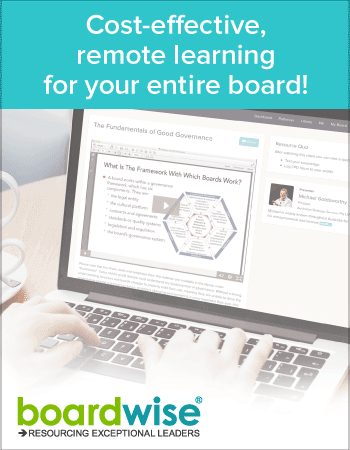Effective Board Packs: The Complete Guide
-
boardpacks
Board Packs Effective Board Packs: The Complete Guide
Board packs are a critical information source for directors, enabling them to properly fulfil their duties and make informed strategic decisions that benefit the organisation they serve. But what should these packs contain? How much information is too much or too little? What’s the right balance between operational data and insightful analysis?
In the extensive guide we aim to provide insights on how to craft board packs that give directors the knowledge they need without overwhelming them.
We cover setting appropriate content, getting buy-in from pack contributors, formatting for ease of use, timing of delivery and much more. Follow these tips for constructing board packs that can empower your directors to be better.
The Raison D’etre of Board Packs
What is the purpose of a board pack?
Board packs serve to get the right information to the right people at the right time. The UK’s Financial Reporting Council concisely sums up their purpose in their Corporate Governance code (2014 edition): “The board should be supplied in a timely manner with information in a form and of a quality appropriate to enable it to discharge its duties.”1
Board packs allow directors to come to meetings prepared. They combine the procedural documents required for the board to function with the figures, reports and analysis needed to make informed decisions. The details in the pack, along with directors’ own expertise, allow them to debate knowledgeably and should encourage them to reach sound conclusions and decisions.
So the ultimate goal when creating a board pack is striking a balance between administration and information. You want to include the information that directors require to do their jobs well, without burying them in superfluous facts and paperwork.
Must-Have Contents
While the specific contents of board packs will vary across meetings, certain board pack structures and elements should always be present:
- The board meeting agenda provides the schedule and topics to be covered. This allows directors to orient themselves and prepare accordingly.
- Minutes from the previous meeting require approval and provide continuity across board activities.
- A CEO report summarises operational performance and brings directors up to speed on major initiatives.
- Financial reports detail key figures like revenue and expenses. They may contain KPIs, forecasts and other analytics.
- Board committee reports cover recent activities and developments in sub-committees like audit and risk.
- Important board correspondence should be included to keep directors looped in.
- Supporting information and documentation related to decisions on the agenda should be provided so directors can make informed choices.
These requirements will vary across meetings but should be agreed upon in consultation between the chair, CEO and company secretary.
The preparer of a given board pack must remember the board’s remit is strategic guidance, not day-to-day operations. Supporting documents should give the big picture view without excessive minutiae.
Quality Over Quantity
Today’s powerful document creation, sharing and data tools make it easy to overload directors with hundreds of pages of reports. But more isn’t necessarily better when it comes to effective board packs. Reams of data can obscure key issues and make packs difficult to digest.
The focus should be on quality information tailored to the board’s needs, not churning out quantity for quantity’s sake. Reports should be concise and condensed with the director’s perspective in mind. Establishing templates and setting maximum lengths for documents can help prevent bloated board packs.
Contributors who regularly provide reports should be issued templates to follow. This adds consistency and allows directors to become familiar with information formats. Templates can include guidance on expected length and depth of content as well as presentation style and paper formatting.
Remember, the board pack information must be accurate and current. Contributors should be informed that the quality of their submissions is paramount. The source and date of reports should always be clearly indicated.
Timely Delivery and Review
Board administrators frequently cite last minute submissions and changes as a headache. They can be a headache for the board as well as late reports may not be as concise as ones prepared well in advance. Late alterations to hard copy board packs must be inserted and re-collated, while digital documents (even in Board Portals) may need updates and director notifications.
To limit disruptions, set firm submission deadlines for pack documents well in advance of distribution date. Emphasise to contributors that deadlines are firm, but still build in extra buffer between initial submission and when materials are really needed.
Sufficient time must be allowed for review, revisions and sign-off by appropriate parties like the chair and CEO. Complex or highly regulated organisations may require packs to be finalised a long way in advance. In this case build adequate windows for amendments into board pack preparation timelines.
When trying to optimise your board pack delivery timeline try to keep in mind the “4, 3, 2, 1 Rule” as a loose guide.
- ~4 Weeks: Commence Agenda Planning.
- ~3 Weeks: Assembles Initial Paper Drafts
- ~2 Weeks: Reviews and Refines Drafts
- ~1 Week: Distribute Final Board Pack
These timings are by no means the only ones you can use and each organisation and board may have its own timings or requirements.
Easy Navigation
Well-organised board packs make life easier for time-pressed directors. Numbered sections, tables of contents and page numbering enable quick navigation to required information. Using visuals to display critical or important data also aid easy navigation of the board pack.
Digital tools like board portals allow linking between agenda items and related documentation, as well as automatic numbering, meaning that directors can smoothly transition between agenda topics and supporting papers.
Provide the Information Directors Need
While management possesses greater day-to-day detail about company operations, they must take care to provide information tailored to the board’s needs. Reports should focus on key issues, priorities and substantive matters - not get bogged down in minor operational minutiae.
Present information clearly, concisely and without unnecessary jargon. The contents of the board pack should be able to be read and understood by someone of reasonable intelligence. To assist with this ensure you define any complex terms and technical acronyms. Data heavy board presentations should include executive summaries and visualisations like charts where appropriate.
The chair plays pivotal roles in ensuring board meetings are at a suitably strategic level by steering discussions away from becoming too operational. However management must supply information in a rigorous, consistent manner and avoid drowning directors with trivial details.
Control of Reporting
The board itself should control the reporting of board information and dictate its needs rather than Management deciding for the board what their information requirements are. This is not to say Management should not have input or provide suitable guidance but that ultimately the board must actively decide what reports it needs, who should provide them and how they should be presented (level of detail, how data is presented etc…). The board should not simply accept whatever management chooses to present.
Justice Middleton’s Centro ruling provides a legal precedent on this issue. He stated that boards must be in charge of the information flow, not passive recipients.
A board can request more data, better presented data or more time to work through complex papers. However directors do need to remember that there is no excuse for failing to properly read and understand board pack contents or for not taking the time to “apply an enquiring mind”.
Selecting Papers
The specific reports requested for each meeting will depend on the board calendar, oversight responsibilities and issues that might be time sensitive or require urgent board attention.
But how do the chair, CEO and company secretary decide what papers to include and what to defer?
Each paper needs to be clearly categorised as for approval, discussion or noting. Don’t waste time producing low-value reports for the sake or it, or accept and include a report just because it has been created.
Rigorously assess prospective papers based on:
- Importance and urgency of the issue
- Relevance to the organisation’s situation
- Whether the issue requires new analysis or can consolidate existing knowledge
- Scope of work and resources required versus capacity available
Board Paper Policies & Templates
Since board pack quality is integral to directors fulfilling their duties, the board should have a policy governing them and also have associated templates to re-enforce the policy. This may be a standalone board paper policy or included in the board charter (depending on the governance framework your organisation/board is using).
The policy should outline expectations around information delivery, content, and contributors’ responsibilities.
For example, the policy may cover:
- Board versus management duties
- What information the board requires
- Guidelines for writing and presenting papers
- Standards for board reporting - e.g. Standards Australia HB 403
- Timing of delivery before meetings
- Review and approval process
- Selection criteria for papers
- Formats, templates and conventions
It is worth providing examples and training for those less experienced, out of practice or new to writing board papers.
Having clear policies and templates for board papers enforces useful and productive structure to speed up both the creation and digestion of board papers.
Building Trust with Transparency
The timely delivery of accurate, relevant information promotes trust and confidence between the board and management. When directors consistently receive board packs that inform without overwhelming, management increases its credibility.
Conversely, unreliable or incomplete information damages trust. Ensuring contributors understand board information needs and respect deadlines is key. The CEO and chair must reinforce transparency expectations.
Great Board Packs Empower Directors
At the end of the day, the measure of a successful board pack is simple - does it give directors the understanding they require to engage in strategic discussion and decision making?
Providing:
- the right information,
- at the right time,
- in the right format,
empowers directors.
And directors who are empowered by an effective board pack carry out their duties more effectively, benefiting the organisation. Creating a comprehensive and effectively curated board pack for each and every meeting is fundamental to this virtuous cycle.
Additional Resources
How to run remote board meetings securely and effectively
Company Secretary Playbook: Which Executives should attend Board Meetings?
11 Strategies to Enhance Your Arts Organisation’s Governance
10 Tips for Improving Your Board Meetings in 2023
Frequently Asked Questions
What does effective board mean?
An effective board is one that provides good governance and oversight for the organisation. The board members work cohesively to guide strategy, monitor performance, manage risks, and provide accountability.
What do you need for board packet?
A typical board packet contains the agenda, minutes from the previous meeting, financial statements, committee reports, management reports on operations, background materials for key decisions, and any other relevant information to inform the board members and help them prepare for the upcoming meeting.
What are the 4 pillars of board effectiveness?
The four pillars of board effectiveness are:
- 1. Accountability - The board is accountable to shareholders and stakeholders
- 2. Stewardship - The board protects and grows the company's assets
- 3. Leadership - The board sets the tone at the top and provides strategic guidance
- 4. Compliance - The board ensures legal, regulatory and governance compliance
Do board members get paid?
Yes, board members in the corporate space typically receive compensation for their board service in the form of cash retainers, equity/share grants, or a combination of both. However not-for-profit directors are not usually paid. Although payment of directors of not-for-profit organisations can happen and depends on the organisation and the industry it operates in.
What factors are important for an effective board meeting?
Key factors for an effective board meeting include:
- A clear agenda sent out in advance along with the board packet
- Open and constructive discussion led by the chair
- Active participation from all directors
- A focus on strategy, performance, risk, and accountability
- Sufficient time allocated to discuss key issues
- Clear decision-making and action items summarised at the end



